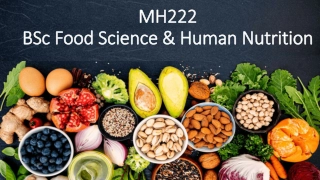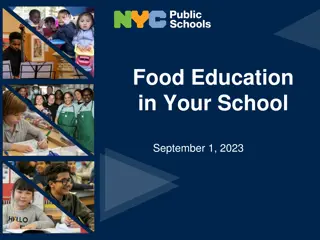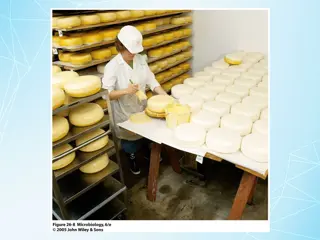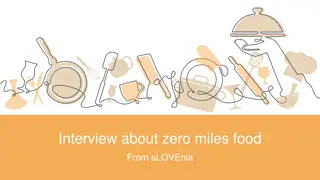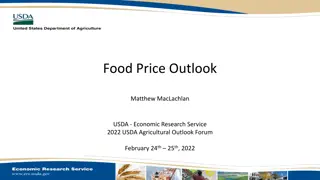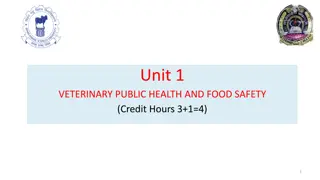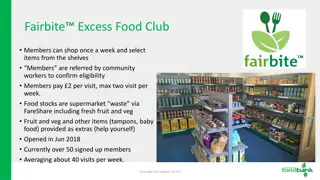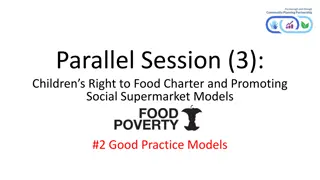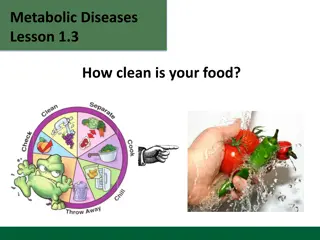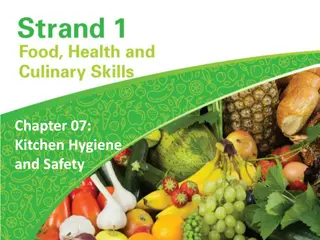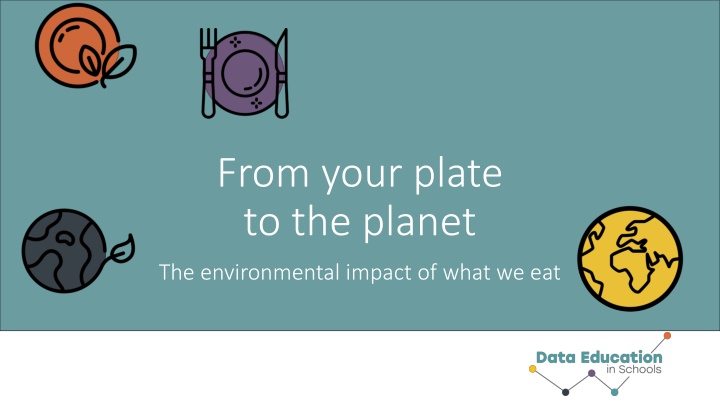
Unveiling the Environmental Impact of Our Food Choices
Delve into the significant environmental repercussions of our dietary selections, exploring factors, gathering data, and designing solutions to reduce our carbon footprint. Discover the profound effects of food production on greenhouse gas emissions and engage in interactive activities to visualize and analyze environmental data.
Download Presentation

Please find below an Image/Link to download the presentation.
The content on the website is provided AS IS for your information and personal use only. It may not be sold, licensed, or shared on other websites without obtaining consent from the author. If you encounter any issues during the download, it is possible that the publisher has removed the file from their server.
You are allowed to download the files provided on this website for personal or commercial use, subject to the condition that they are used lawfully. All files are the property of their respective owners.
The content on the website is provided AS IS for your information and personal use only. It may not be sold, licensed, or shared on other websites without obtaining consent from the author.
E N D
Presentation Transcript
From your plate to the planet The environmental impact of what we eat
Introduction Food Production is responsible for approximately one third of all greenhouse gas emissions contributing to global warming. That s about 19 times the amount from the commercial airline industry.
Learning Intentions We are learning to: Find out different factors that contribute to the environmental impact of what we eat. Gather and compare data about the environmental impacts of different foods. Evaluate the source and quality of the data. Draw a conclusion based on the data about what will make the biggest difference in reducing our impact. Think creatively about how to do this.
Success Criteria We will: Gather data using the online calculators. Create a visualisation Discuss what conclusions we can draw from the data. Design a label to show information about the carbon emissions of a food item.
Lesson structure Part 1 and 2: Data Gathering & Visualisation Analysis & Discussion Part 3: Creative Activity design a food label
Data Gathering & Visualisation Task 1: Calculate the food miles of each of the food items using the food miles calculator. If the country of origin is not specified, how could you make an educated guess? foodmiles.com
Data Gathering & Visualisation Task 2: Visualise the data. Three Options: Order the food cards from most to least number of food miles Draw a graph using paper and pencil Use graphing software or a free online tool such as Kids Zone Create a Graph foodmiles.com
Data Gathering & Visualisation If you want to use the Create a Graph go to dataed.in/createagraph
Data Gathering & Visualisation If you want to use the Create a Graph go to dataed.in/createagraph
Data Gathering & Visualisation Task 3: Calculate the carbon emissions for each item. Choose one of the three emissions calculators. Later you can compare your results with others in your class who have used a different calculator.
Data Gathering & Visualisation Plate Up for the Planet dataed.in/foodcalc1 Carbon emissions calculator dataed.in/foodcalc2 BBC food calculator dataed.in/foodcalc3
Data Gathering & Visualisation Sample Graphs Task 4: Visualise your data.
Data Gathering & Visualisation Bonus Activity Use a supermarket shopping website to find out the price per kg of each item. Visualise the data.
Discussion questions Are the items with the most food miles also the items with the most carbon emissions? If you made graphs, how do the overall shapes compare?
Discussion questions How do the different calculators measure carbon emissions? What do they factor in? What is not factored in?
Discussion questions Who made each calculator? Do they have an agenda? How trustworthy are they?
Discussion questions If you completed the bonus task, are the most expensive foods also the ones with the most food miles or carbon emissions? Should they be?
Analysis & Discussion Come up with a list of principles that would help us make more sustainable food choices. Based on the data, how should we rank these in terms of importance?
Creative task: Design a food label Many food labels tell us ingredients and the country of origin, but not the other contributing factors to carbon emissions. Design a food label that shows the carbon emissions of the different foods we eat.
Well done! Well done!
If you require this document in an alternative format, such as large print or a coloured background, please contact dataschools@ed.ac.uk

